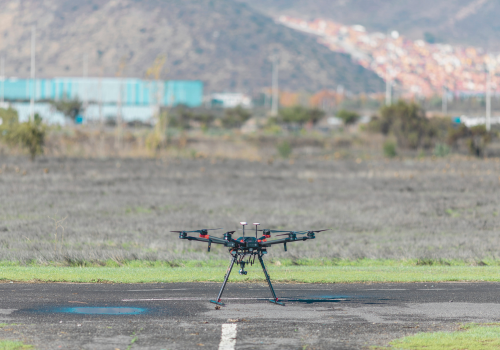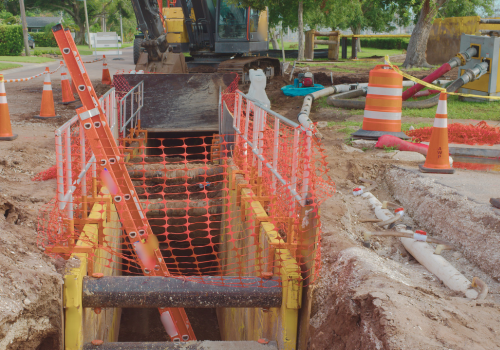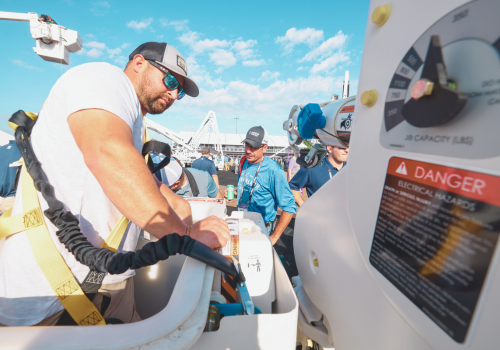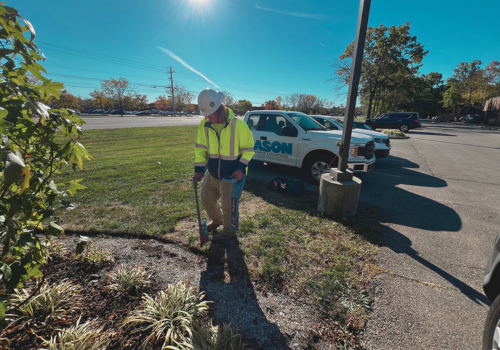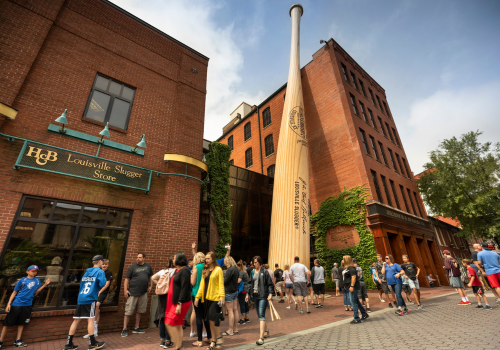John Deere started The Utility Expo 2021 off with a bang. Or should I say a “spark”?
At their booth Deere displayed and demonstrated the 310 X-Tier. If the X jumps out to you, it’s the highest level of Deere’s new performance tiering naming system for machines that the company introduced earlier this year. The X is reserved for Deere’s hybrid and electric machines and is meant to signify that this machine features the latest and greatest technology.
Now, as for the 310 in 310X, obviously that means that the foundation of this battery-powered machine is Deere’s proven 310 backhoe—specifically the 310L, Deere’s 100-hp model with 14.1 feet of digging depth.
Deere says this battery-powered 310 X has been developed to match the diesel-burning 310L spec for spec, including the machine’s 9,300 lb-ft of bucket breakout and 28 gallons per minute of hydraulic flow.
But the fact that it’s a 310 isn’t the only reason this backhoe is a perfect fit for a Utility Expo debut. To develop and prove this machine out, Deere has partnered with one of the country’s largest utilities.
That would be National Grid, a Deere customer and a multinational company that supplies natural gas and electricity to millions of customers throughout the northeast U.S. As part of this partnership with National Grid, the utility company has put a 310 X to work on several of its job sites in order to provide Deere with a testing and proving ground for the prototype machine.
But National Grid is a bit more than a testing partner. Deere says a battery-powered 310 was National Grid’s idea to begin with. The company approached Deere at this show a few years back and asked if they would be interested in developing an electric backhoe to assist the company in meeting sustainability goals set for 2030.
National Grid has a particular fondness for the 310 model. After all, as a natural gas and electric provider, National Grid is mostly performing shallow trenching, making the 310’s 14-feet of dig depth, plus 25 mph of top speed and self transport a perfect solution.
The company used the machine on its jobs throughout the spring and summer of this year and operators have reported back to Deere that they found that the battery-powered 310 X did in fact seem to match the performance and power of the diesel-powered 310L.
But for this week, the Deere booth here at The Utility Expo is the machine’s home where Deere hopes it can gain further insight from other utility customers and operators through an up-close look at the machine.
One of the biggest questions contractors at this show will have for Deere concerns runtime. How long can you work this machine before it needs a recharge?
Deere isn’t commenting on the specific runtime of the 310 X as it is today. However, the company did share that they likely won’t bring this machine to market unless it can work 8-10 hours minimum before a recharge is necessary.
As for the battery technology onboard the 310 X, Deere has partnered with multiple suppliers to outfit the machine with battery power, but hasn’t yet announced who those suppliers are.
On top of setting their sights on 8-10 hours of runtime, Deere is also going to test multiple different charging methods including fast charging from a fixed charging point and mobile quick chargers that could be deployed. Think of those as big battery packs that could be deployed to a site kind of like how we use battery packs to charge up our phones.
Beyond the sustainability goals of utilities across the country, another big reason an electric machine makes sense on a utility job site is how quiet the machine is.
Deere says the 310 X generates 20-25% less noise than the 310L depending on the application. A quieter machine with zero emissions is a no-brainer in jobs in confined spaces, urban settings, or near hospitals, schools and other areas where quiet operation is key.
But beyond fuel and noise emissions, the other big reason utilities will consider the 310 X—should it come to market—is the savings with cost of ownership as an electric machine is much easier to maintain than one with an internal combustion engine.
Deere says there are a few more years’ worth of testing to determine whether or not a battery-powered 310 X is a viable machine for the market. As such, there is no timeline for the machine’s release, but the company is hoping show goers here at The Utility Expo and the feedback they provide will push them further in that journey.
Subscribe to The Utility Expo monthly newsletter to receive more industry insights like this.


